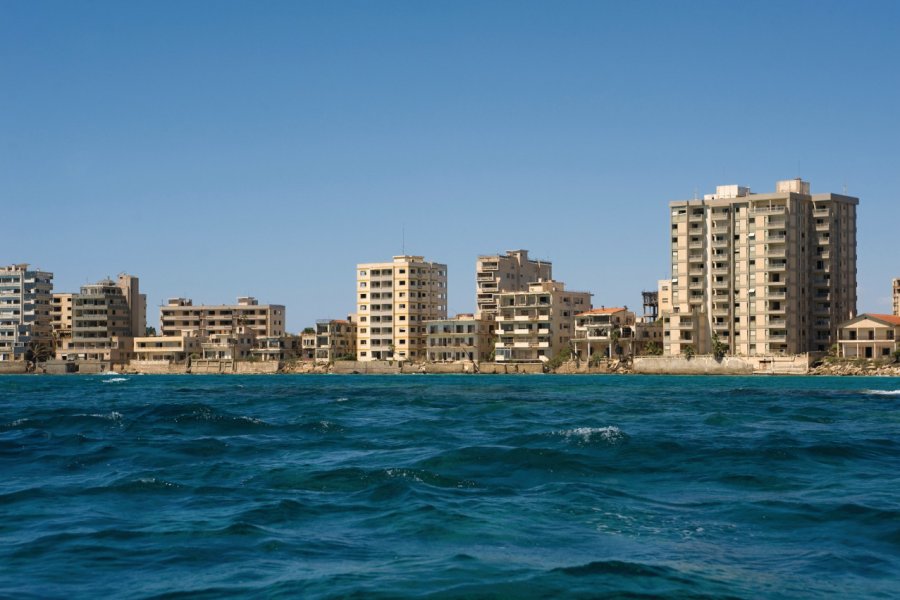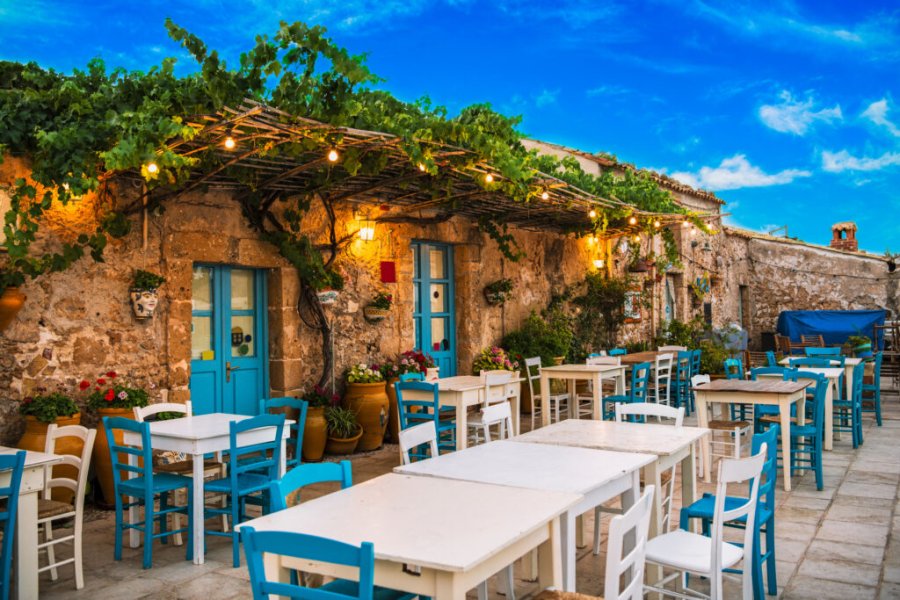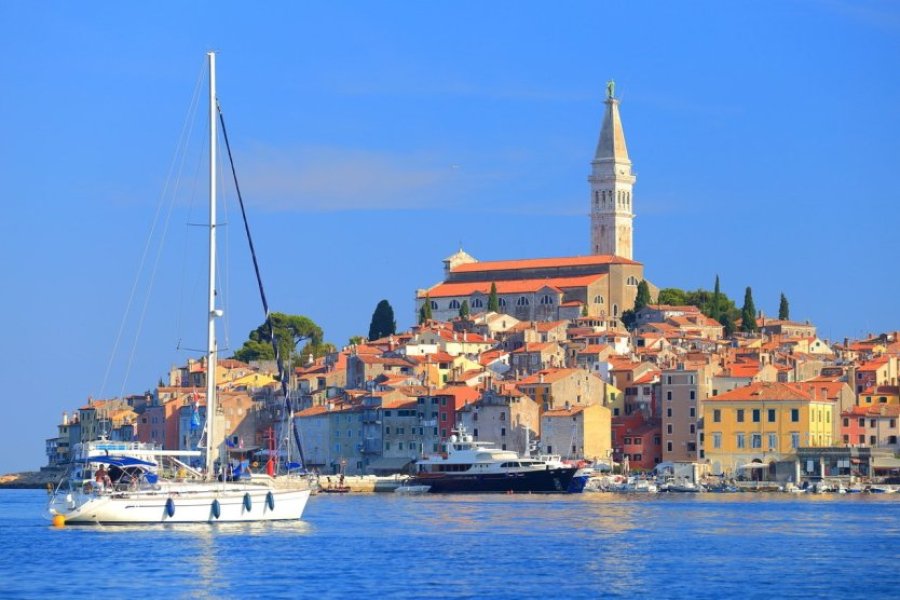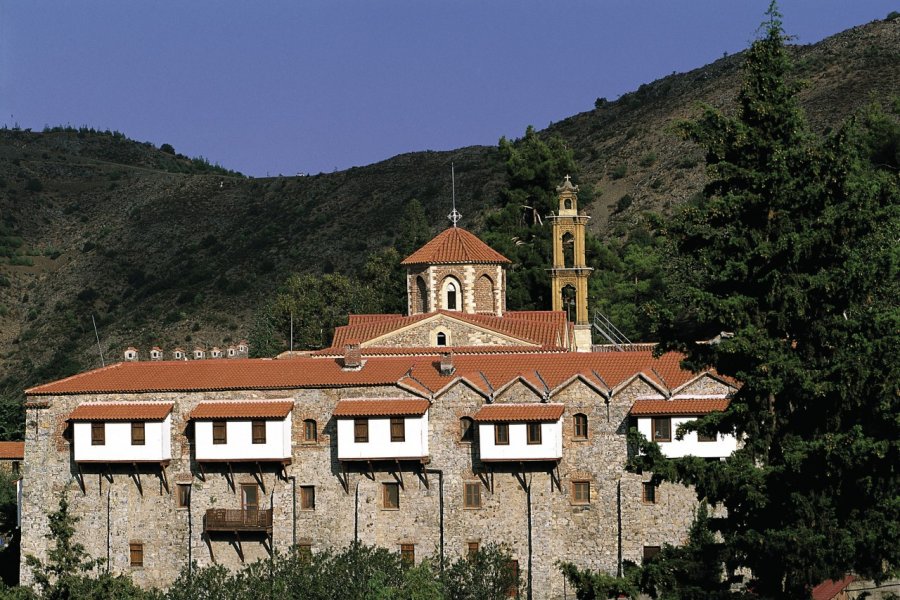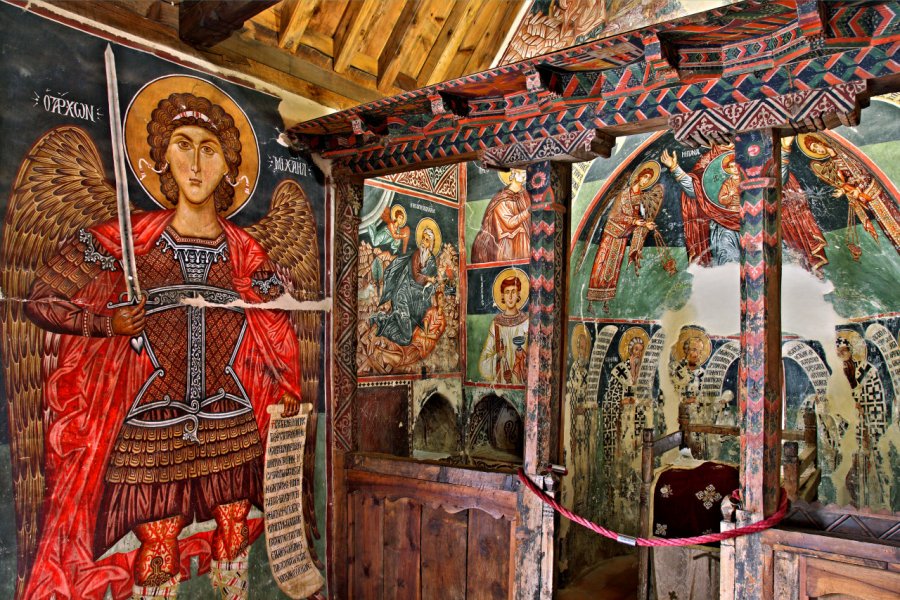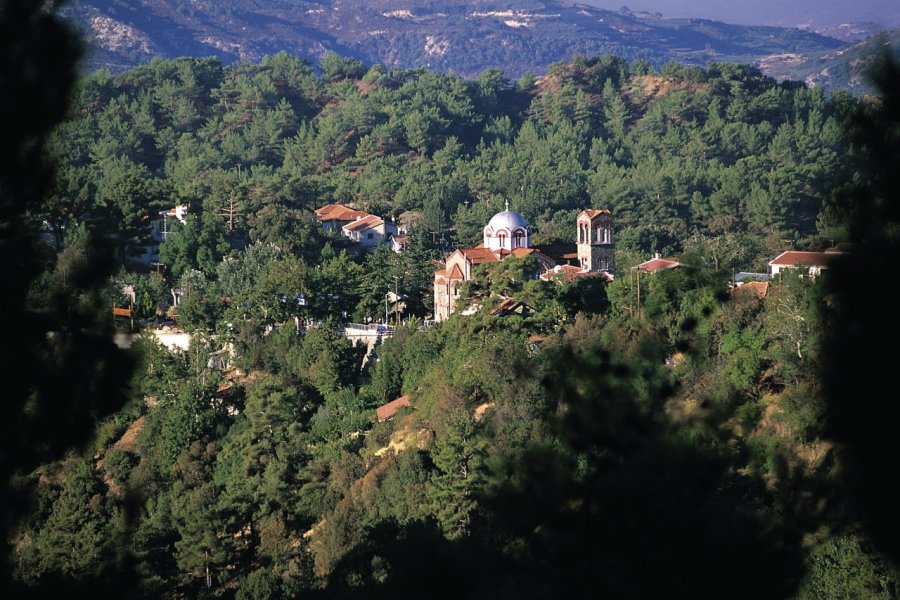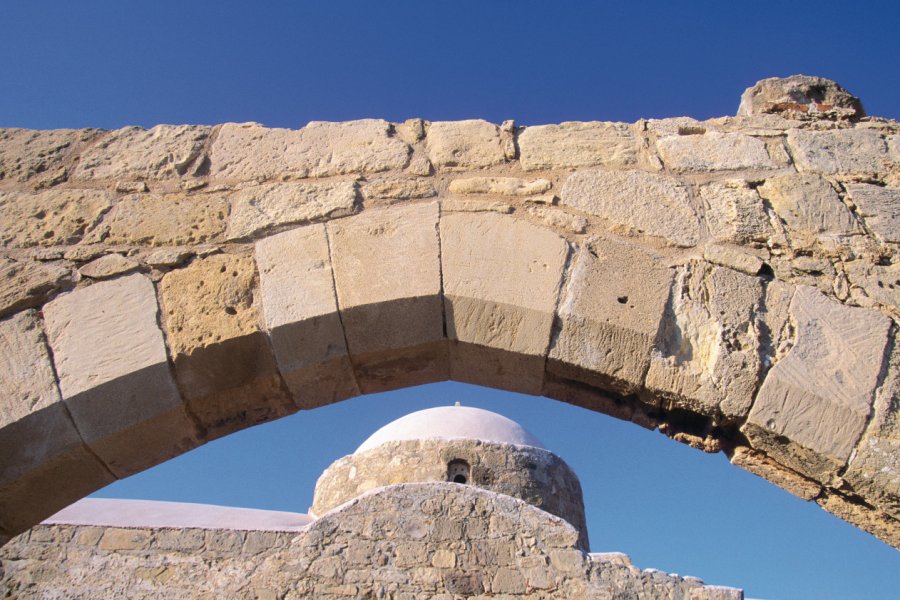Travel guide Cyprus
Located in the Mediterranean Sea, close to the Turkish and Syrian coasts, this island - including its capital Nicosia - has been divided in two since 1974. The north is under Turkish rule, while the south, with a Greek majority, is the Republic of Cyprus. The two areas are separated by the UN buffer line, known as the green line. The island of Cyprus is above all a seaside destination. In addition, there is a rich heritage and opportunities for hiking in a preserved nature. Among the must-sees are Nicosia South, rich in historical monuments, whose warm atmosphere is appreciated, and the archaeological sites of Paphos linked to the cult of Aphrodite. Between Nicosia and Paphos, the 3 valleys of Marathassa, Cedars and Pitsilia are home to 9 Byzantine chapels classified as world heritage. On the road to Larnaca, we cross typical villages, the monasteries of Stavrovouni, Makhairas and Ayios Hérakleidos, the ancient site of Tamassos and the neolithic site of Khirokitia. Near Lacarna, we discover the Tekké of Sultan Hala, on the edge of the Salt Lake, an important place of pilgrimage for the Muslim Cypriots. Finally, do not miss the monastery of Kykkos. The Cypriot food is one of the pleasures of the destination. It is similar to the one in Greece and is accompanied by local wines. Go to the market early in the morning to enjoy a multitude of fresh fruits. As for souvenirs, the local handicrafts provide them with lace and embroidery, basketry, pottery, wood carvings... And to better organize your visits, read your Cyprus tourist guide.
What to see, what to do Cyprus?
-
Book an activity
-
Customized travel
- The most beautiful cities Cyprus
When to go Cyprus ?
The very high tourist season is of course July and August, which could almost be extended to June and September. High prices and crowds are guaranteed. Spring is superb, as the island is then covered with flowers. For a relaxing stay, beach and sunbathing, spring, from March to June, or autumn from September to the end of October are perfect. Autumn corresponds to the mid-season, which is quieter, and winter to the low season, when prices are lower. Many establishments are slow or even closed. During the off-season, there are some very good deals to be had. Luxury hotels are 30 to 50% cheaper than in the summer. Supermarkets are starting to spring up on the outskirts of the big cities, but not too many for the moment. Do not miss the religious festivities that punctuate the daily life of the Orthodox, such as the Orthodox Easter, celebrated in April and lasting several days. Throughout the month of February, the carnival alone is a great attraction. Parades, dances and costume parties bring together the whole population in the main cities of the island, culminating in the closing party in Limassol. On this occasion, take advantage of the special evenings that the hoteliers do not fail to organize. Those who have waited until autumn to travel will attend the Limassol Wine Festival, honoring the many Cypriot vineyards (September).
Suggested addresses Cyprus
Travel Cyprus
-
Find a hotel
-
Car Rental
-
International e-SIM package
-
Find a local agency
L’idée de séjour d’une semaine dans le Sud de Chypre permettra de faire le tour des principales curiosités et attractions de l’île. Ce type de parcours est facilité si l’on dispose de son propre véhicule ; sans cela, Troodos et certains villages de l’intérieur sont plus difficiles d’accès. Mais tous les sites touristiques sont également accessibles en bus. Concernant le séjour d’une semaine dans le Nord de Chypre, il peut s’agir d’un séjour de plusieurs jours avec entrée et sortie dans le Nord de Chypre. Ou d’un séjour de quelques jours depuis le Sud de Chypre. Mais on ne peut pas arriver dans le Nord de Chypre et repartir du Sud de Chypre. Le séjour long permettra d’entrer dans les détails tout en prenant son temps, les grandes lignes ayant été données dans le séjour court. Voyagez à votre rythme.
Find unique Stay Offers with our Partners
How to go Cyprus
How to go alone
There is no contraindication to travel alone in Cyprus. In spite of the latent conflict between Turkey and Greece, it is safe to stay in Cyprus from either side. But if you arrive from the north you will not be able to leave from the south. If you travel by rental car, you will have to change vehicles between the north and the south and vice versa. In the south, book your accommodation during the high tourist season. If you stay in Turkey, Cyprus is connected by ferry.
How to go on a tour
There are many organized trips to South Cyprus, particularly in the seaside area. Some focus on natural treasures, others on heritage treasures, or even mix the two orientations. Organized trips are less numerous but exist for the northern part of the island. Finally, some tours on the Mediterranean coast of Turkey include a visit to Cyprus (1h30 by ferry).
How to get around
The ideal is to rent a vehicle to get off the beaten track. Attention: driving is on the left in Cyprus. Attention bis: rental cars cannot cross the Green Line between the two parts of Cyprus. The road network is becoming increasingly modernised and a motorway links the major cities. In the southern part of Cyprus you benefit from a good network of buses from town to town. Private minibuses travel north. Taxi fares are fixed.
Featured articles Cyprus
Discover Cyprus
With its strange shape evoking a guitar or a swordfish, Cyprus is an invitation to daydream and travel. At the same time, dominated by the Troodos massif and bathed by the waters of the Mediterranean, it is also undeniably an island whose contours are difficult to define. On a daily basis, it lives with two currencies, two languages and a dividing line to cross! Geographically and culturally very oriental, the Republic of Cyprus is nevertheless firmly anchored to the Old Continent. Cyprus remains the island of umbrellas and paradoxes. The tourist will benefit from two destinations for the price of one, both easy to navigate. Divided since 1963 and partially occupied by Turkey since 1974, its history is obviously complex. For 11,000 years, the island's strategic position and natural resources have attracted many conquerors who have each left their mark and forged their own identity.
Pictures and images Cyprus
The 12 keywords Cyprus
1. #Donkey

The donkey most often represented in Cyprus is brown with the outline of the eyes and the belly in beige. It is quite close to the species found in the Pyrenees. Some sources seem to attest that this animal was introduced in Cyprus by the crusaders. Until quite recently, the donkey was the main means of transport used in Cyprus.
2. #Aphrodite
To the ancients, she is the goddess of love and beauty. For today's Cypriots, she has above all become an excellent ambassador. She is said to have appeared from the waves at Petra tou Romiou, near Paphos. The beautiful statue of her, found in Soli in the North, on display in the Cyprus Museum in Nicosia, has become the symbol of the island.
3. #Café

You will be amazed by the thousand and one ways of preparing coffee in Cyprus. There is of course Greek coffee, which is similar to Turkish coffee. To order it, say "éna elléniko", which means "a Greek". Take your time to drink it, because the grounds must settle at the bottom of the cup. But in summer, there is nothing like an iced coffee that is drunk "chilled".
4. #Cuivre
Copper has been mined in Cyprus since the 3rd millennium B.C. and it was the source of the wealth of ancient cities such as Soli or Salamis. But more than that, it gave the island its name. Copper is called kypros in Greek and that is where the word Cyprus comes from. The colour of copper was also given to the silhouette of the island on the national flag.
5. #Golf

A former British colony, Cyprus only recently discovered a passion for golf, with the first course opened in 1994 and the National Federation created in 2000. It's a bit of a heresy to maintain such green courses in such a sunny country, but with the demand from tourists, the sector is booming.
6. #Kleftiko
Kleftiko means "stolen". This is explained by the fact that in the early 1920s, during the struggle for independence against the Ottomans, shepherds used to steal cattle and prepare delicious goat or lamb dishes. If the meat is bought today in a more civilized way, the lamb is still cooked in the same clay ovens.
7. #Kibris
Or how to write Cyprus in Turkish. You'll even hear Kuzey Kıbrıs hoşgeldiniz, or "Welcome to Northern Cyprus". On the other side of the green line, it's both the same and another country. Another currency (Turkish lira, TYR), another official language (Turkish) and a state not recognized by the international community (apart from Turkey).
8. #Icons

The largest collection in the country is in the Byzantine Museum of the Makarios III Foundation in Nicosia's Old Town. In the Agios Kassianos Church, the remarkable 18th-century wooden engraved iconostasis preserves magnificent 15th and 16th-century icons from the Basilica of Saint Sophia. A wonderful example among others.
9. #Green Line
Why green? This color that evokes nature does not suit this no man's land. The "Green Line" or "Attila Line" is the name given to the buffer zone that divides the island in two since 1974. The UN peacekeepers are camped on this demarcation line, which runs from Kato Pirgos, in the west, to the region of Famagusta, in the east, and crosses Nicosia.
10. #Makarios III
A great Cypriot figure of this century, and undoubtedly one of the most important in its history, Archbishop Makarios knew how to turn his country into a modern country as a religious leader and statesman. Elected Archbishop of Cyprus in 1950, he became President of the Republic after a genuine plebiscite, at the time of independence in 1960.
11. #Beach
If the sea is of a remarkable azure and clarity and that one often wants to take a dive, the sand is rather dark and rarely fine. Except in a few places, in the region of Agia Napa, there are hardly any large sandy areas. But some places are beautiful and the rocks often add to the charm of the beach.
12. #Wine
Among the local production, the wines of the Kommandaria region have been famous since ancient times. They made history in 1224. In that year, the first world wine ranking ("La Bataille des Vins") was held in France and a bottle from the region won. Since then, the grape juice has flowed under the bridge ..
You are from here, if...
You always carry identification with you. It's a must, because if you have to run an errand or meet someone "across" the "green line", it's a must.
You have a distant relative in Britain, a member of the diaspora.
You love the music of the late George Michael. Even if it's a bit kitschy, celebrities of Cypriot origin known all over the world are not that common, right?
Ordering an "arnaki kleftiko" (literally a "stolen lamb") doesn't scare you. You know that the expression just refers to the way it is cooked, in a traditional clay oven that is well sealed.
In the North, you have a preference and a clear-cut opinion between the ground coffee of Kyrenia and that of Famagusta.
On both sides, you raise your eyebrows, a little weary, as soon as a geopolitical discussion on the future of the island begins. In passing, you easily throw "Inch'Allah", whatever your side..

